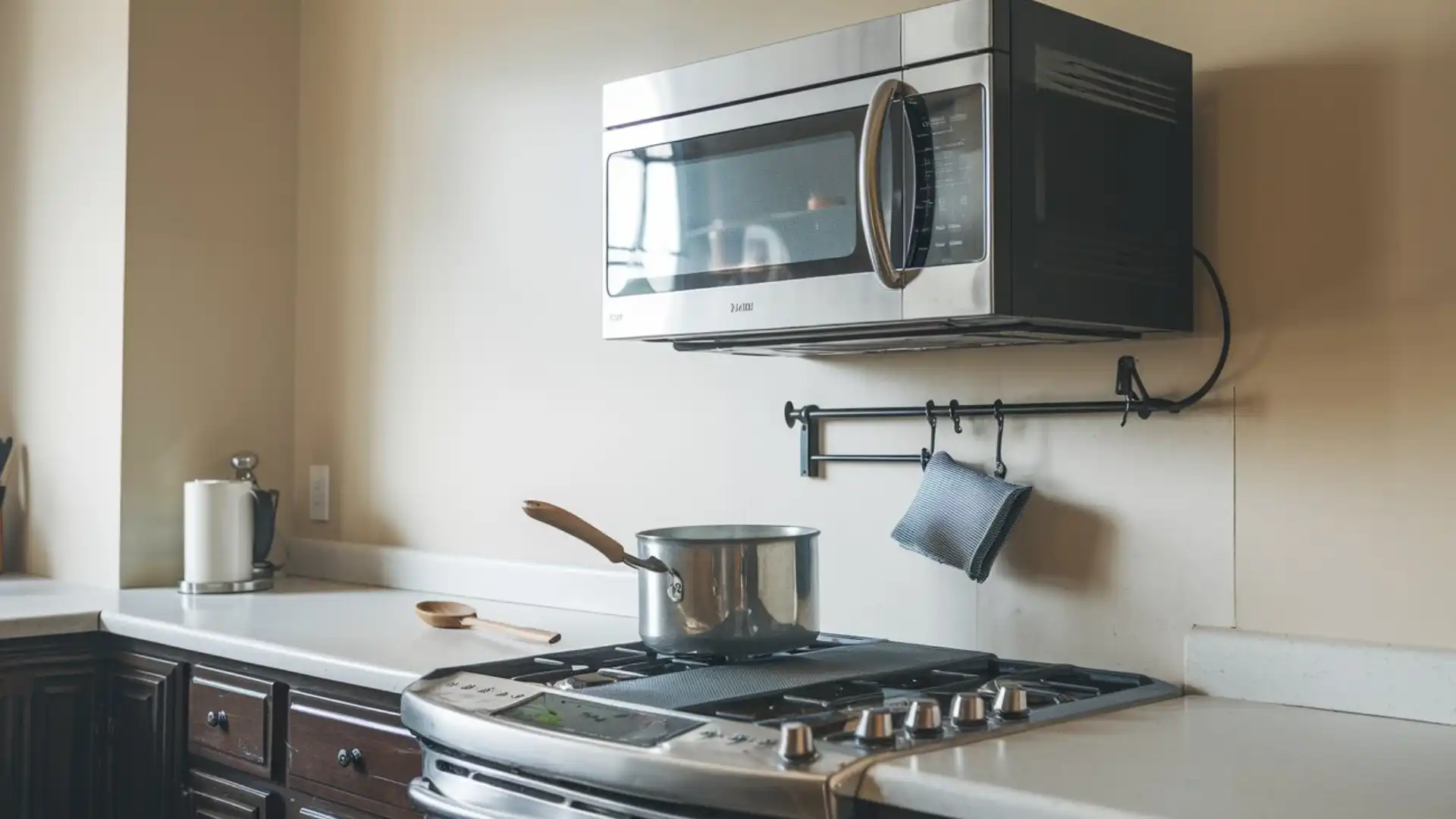Looking to install microwave above stove without a cabinet? Whether you’re upgrading your kitchen or making the most of limited space, mounting a microwave over your stove can be a practical and stylish solution. This setup not only frees up valuable countertop space but also provides easy access while cooking. With the right tools and guidance, you can install a microwave securely, even without upper cabinetry. In this guide, we’ll walk you through the step-by-step process to ensure a successful installation that’s both safe and efficient, helping you create a sleek, modern kitchen layout. Let’s get started!
Why Install Microwave Above Stove Without a Cabinet?
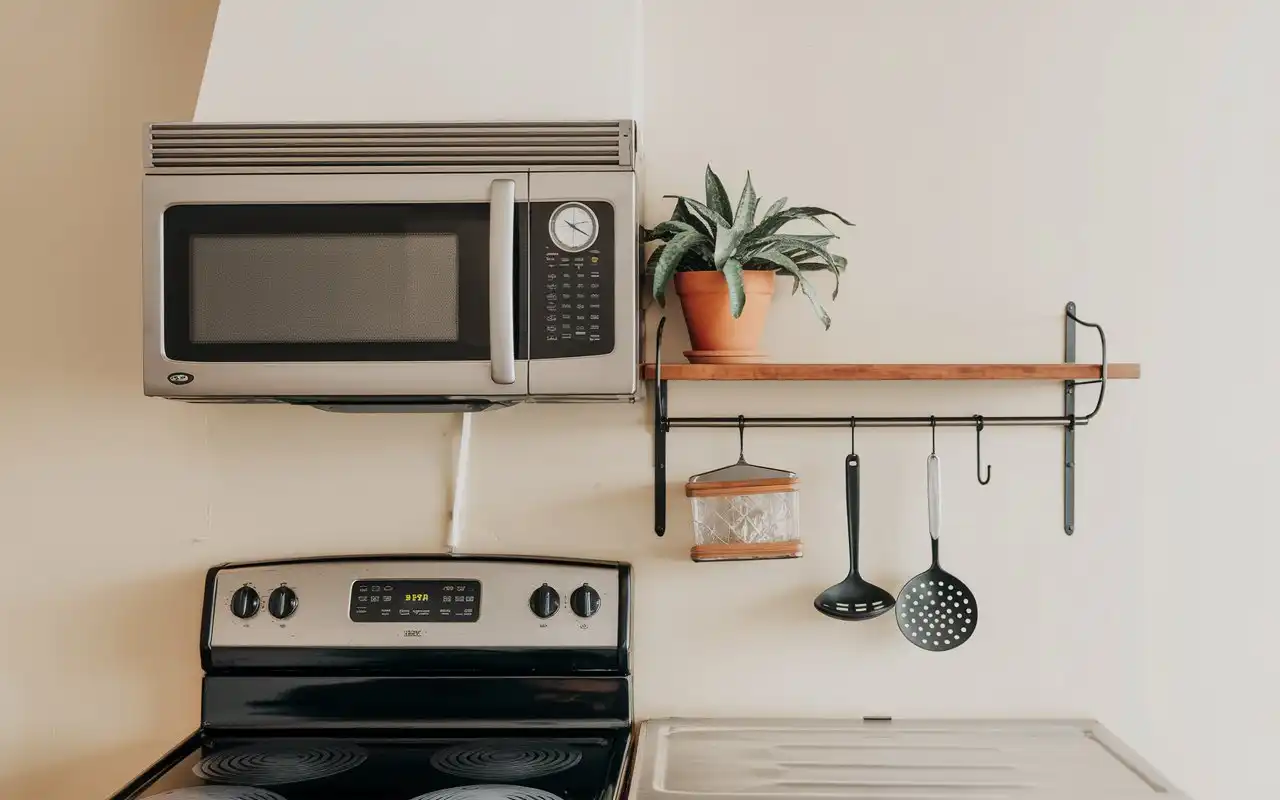
Installing a microwave above the stove without a cabinet offers a sleek, modern look to your kitchen while maximizing the available space. The absence of cabinetry means you can create a more open, uncluttered design that enhances the visual appeal of the room. For those with smaller kitchens, this solution is particularly effective as it allows you to use every inch of available space efficiently.
Additionally, many over-the-range microwaves come with built-in ventilation systems, which help to filter or vent out steam, smoke, and odors from cooking. This dual functionality—combining a microwave with an exhaust system—eliminates the need for a separate range hood, making it a practical choice for those looking to streamline their kitchen appliances.
Tools and Materials Needed for Installation
Before starting the installation, make sure you have all the necessary tools and materials on hand to avoid interruptions during the process. The microwave mounting kit is essential and often comes included with the microwave itself, but if not, make sure to purchase one that’s compatible with your model.
Using a stud finder is critical because over-the-range microwaves are heavy and need solid support to prevent accidents. The wall anchors and bolts will help keep the microwave securely fastened, especially if you’re not drilling directly into studs. A drill and screwdriver will be your go-to tools, while a level ensures the microwave is perfectly straight once mounted. Having these items ready will make the installation process more seamless.
Step-by-Step Guide to Install Microwave Above Stove Without Cabinet
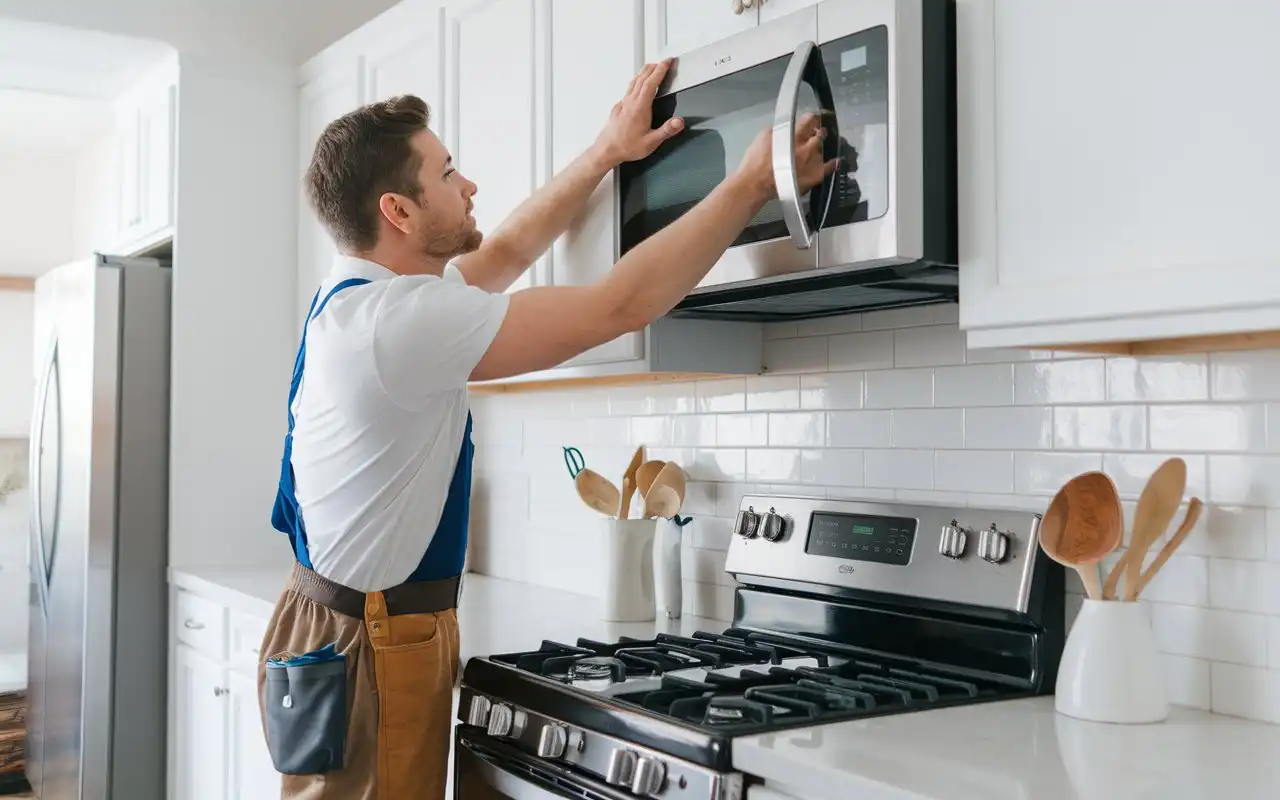
Choose the Right Microwave
The first step in installing a microwave above the stove without a cabinet is choosing the right model. Not all microwaves are suited for this type of installation, so it’s important to select an over-the-range (OTR) microwave that is designed for mounting above the stove. These microwaves are typically larger than countertop models and come with built-in features like exhaust fans and lighting, which help enhance the cooking environment.
When choosing, pay attention to the size of the microwave in relation to your stove. Make sure it fits both horizontally and vertically in the space above your stove, with enough clearance to ensure safety and convenience while cooking.
Locate the Studs
Locating the studs in the wall is one of the most critical steps in installing a microwave above the stove without a cabinet. Because the microwave will be holding a considerable amount of weight, attaching the mounting bracket to the studs ensures it is securely fastened. Use a stud finder to locate the studs in the wall above the stove.
After identifying the studs, mark them with a pencil so you know where to drill later. If you can’t find studs in the desired location, you’ll need to use heavy-duty wall anchors to provide additional support, but stud mounting is always preferred for safety.
Position the Mounting Bracket
Once you’ve located the studs, it’s time to position the mounting bracket. The mounting bracket will support the weight of the microwave, so it’s essential to align it correctly. Typically, the bottom of the microwave should sit between 13 to 18 inches above the stove, providing enough clearance for cooking while allowing easy access to the microwave.
Hold the bracket in place and use a level to ensure it’s perfectly straight. Mark the spots where the screws will go and drill holes at these marks. If you’re drilling into studs, use long screws for secure mounting. If you’re drilling into drywall, use heavy-duty anchors to ensure the microwave is adequately supported.
How To Install Microwave Above Stove Without Cabinet: Electrical Considerations
Prepare the Electrical Outlet
One of the most important steps when you install microwave above stove without a cabinet is ensuring there’s an accessible electrical outlet. Most over-the-range microwaves require a dedicated outlet that is positioned nearby. If you don’t already have one, you may need to install a new outlet, either inside the wall or behind the microwave itself.
If you’re unfamiliar with electrical work, it’s a good idea to hire a licensed electrician to do this part. Proper electrical installation ensures that the microwave functions safely and meets local building codes. You’ll also need to make sure the outlet can handle the power requirements of the microwave, as over-the-range models typically have higher power needs than countertop models.
Ventilation: Ensuring Proper Airflow
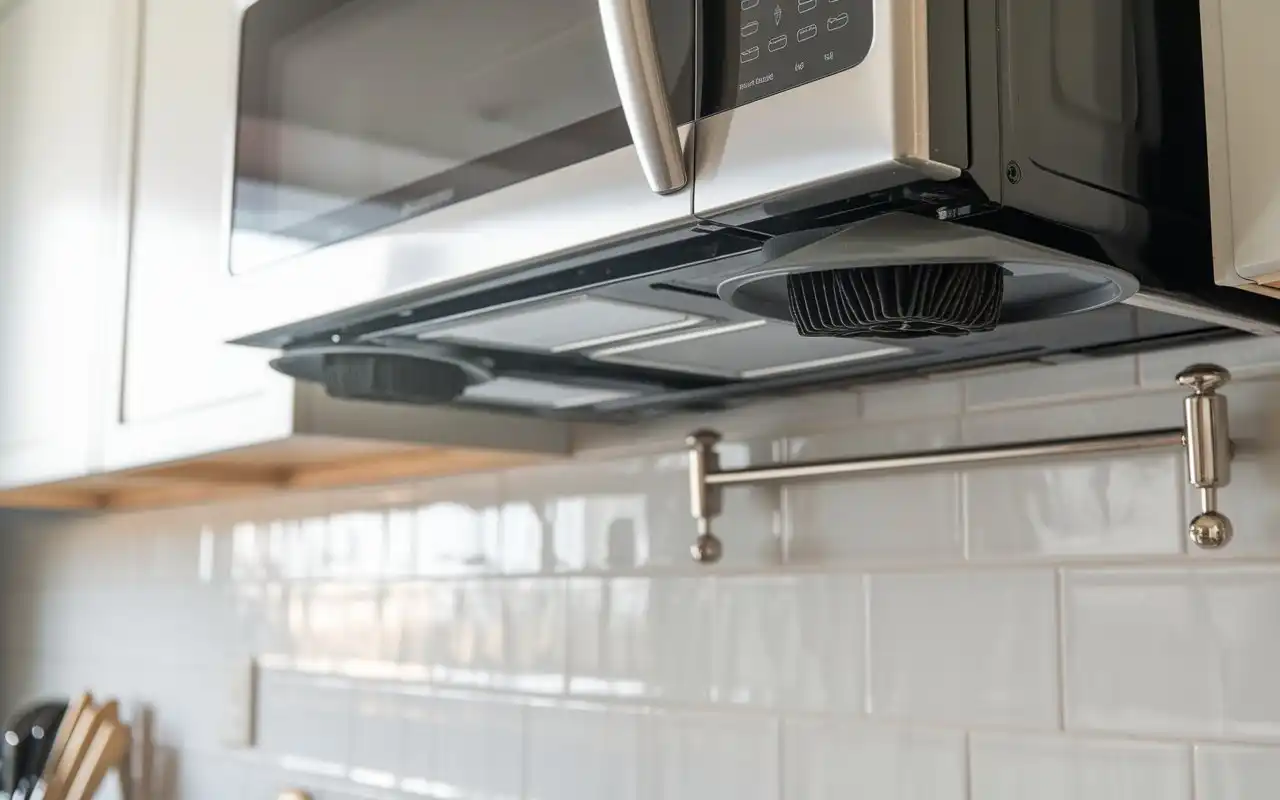
Handling Ventilation Without a Cabinet
When you install microwave above stove, ventilation becomes a critical consideration, particularly without a cabinet. Proper ventilation ensures that steam, heat, and cooking odors are managed effectively, either by recirculating filtered air back into the kitchen or by venting it outdoors.
If the microwave has a recirculating ventilation system, it will typically use charcoal filters to clean the air before pushing it back into the room. For those who prefer external venting, you’ll need to cut an exhaust hole through the wall to allow the microwave to expel air outside. This requires extra planning but offers better overall air quality control, especially if you do a lot of high-heat or greasy cooking.
Secure the Microwave
Now that the bracket is in place, the next step is to secure the microwave. Over-the-range microwaves typically come with instructions and mounting hardware designed to make this process easier. However, because they are heavy, you may need assistance from another person to lift and position the microwave.
Carefully align the microwave with the mounting bracket and slide it into place. Once positioned correctly, secure it with screws or bolts provided by the manufacturer. Double-check that everything is level, as a tilted microwave can lead to problems down the road. Ensure all screws are tightened properly to avoid any risks of the microwave shifting or falling.
Safety Considerations When You Install Microwave Above Stove
When installing a microwave above the stove without a cabinet, safety should be your top priority. One of the key considerations is maintaining the recommended clearance between the stove and the bottom of the microwave, which is typically 13 to 18 inches. This space ensures that the microwave won’t be exposed to excessive heat from cooking, which could lead to damage or malfunction.
Another important safety concern is weight distribution. Microwaves are heavy, and improper installation could cause them to come loose from the wall, leading to injury or damage. Always use heavy-duty wall anchors if studs are unavailable, and make sure that the mounting bracket is rated to hold the weight of the microwave.
Finally, ensure that the microwave’s ventilation system is functioning properly, as inadequate ventilation can cause overheating. If the microwave has an exhaust function, make sure the ductwork is installed correctly to vent air outside.
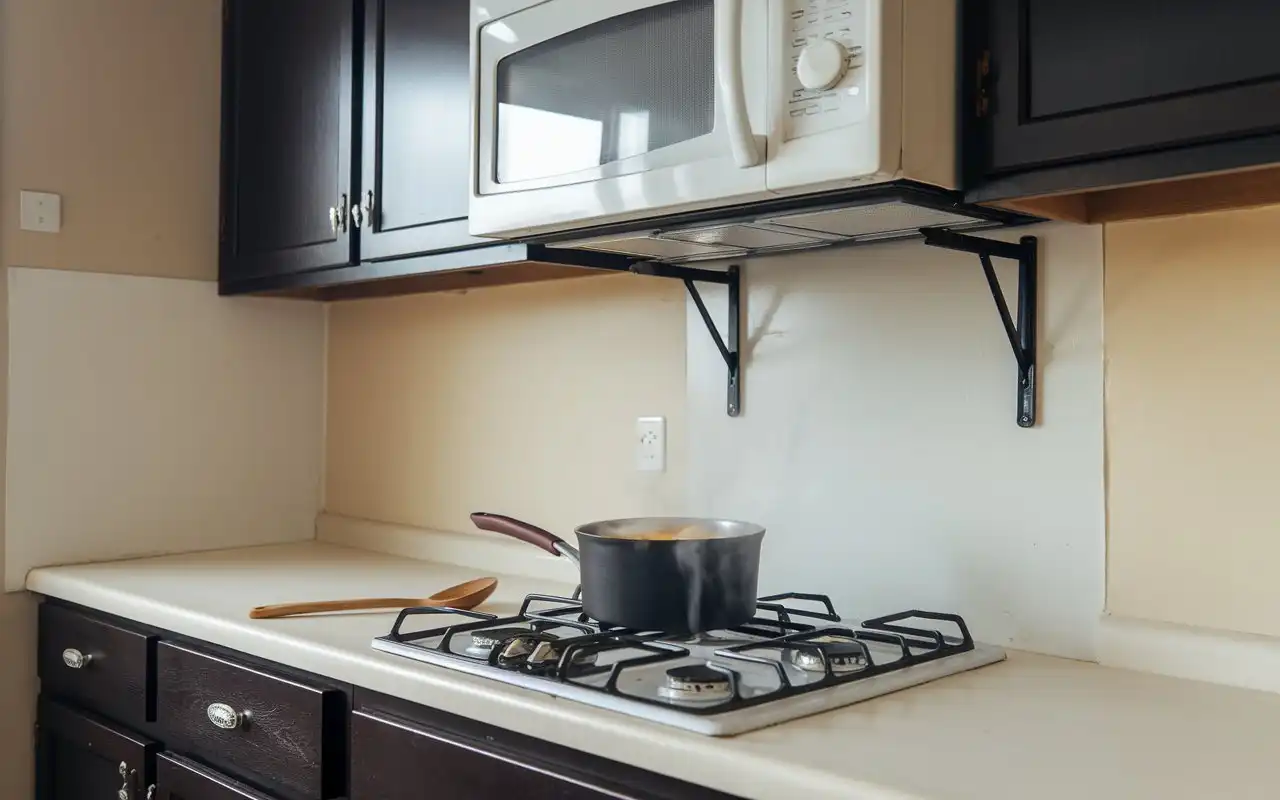
Troubleshooting Common Installation Issues
Even with careful planning, problems may arise when installing a microwave above the stove without a cabinet. Here are some common issues and their fixes:
- Microwave Not Level: If the microwave is crooked, it may be due to uneven alignment of the mounting bracket. Double-check with a level and adjust the bracket or microwave as needed to ensure it’s straight.
- Loose or Weak Bracket: If the bracket feels loose, it could be because the screws are not properly anchored in the studs or wall anchors. Check the mounting points, tighten any loose screws, and reinforce weak areas with additional anchors if necessary.
- Insufficient Ventilation: If you notice that your kitchen is not being adequately ventilated, it could be due to a blockage in the ventilation system. Inspect the ductwork or filters and clean them regularly to ensure optimal airflow.
Alternative Solutions for Installing Microwave Above Stove Without Cabinet
If the idea of installing a microwave directly on the wall without a cabinet feels too risky or complex, consider these alternative solutions:
- Install a Floating Shelf: One popular option is to install a floating shelf above the stove to support the microwave. A sturdy shelf with proper weight capacity can provide the needed support, offering an open, modern look without requiring complex wall mounting.
- Wall-Mounted Microwave Brackets: Some manufacturers offer microwave-specific wall brackets designed for safe and easy installation. These brackets often come with adjustable arms to accommodate different microwave sizes, providing a secure and streamlined way to install your microwave without needing cabinetry.
Both of these options allow for flexibility in the kitchen’s design while offering the benefits of above-stove microwave placement.
Conclusion
Installing a microwave above the stove without a cabinet is a great way to maximize kitchen space while adding a sleek, modern touch. By following this step-by-step guide, you can safely and securely install your microwave, even without the support of a cabinet. Always remember to prioritize safety, particularly regarding clearance, weight distribution, and ventilation. With the right tools, planning, and execution, your new microwave setup will enhance both the functionality and style of your kitchen.

